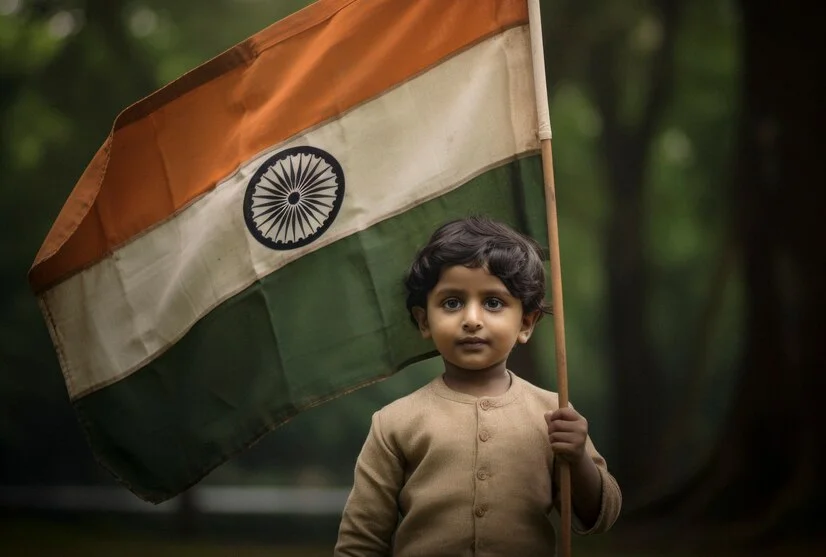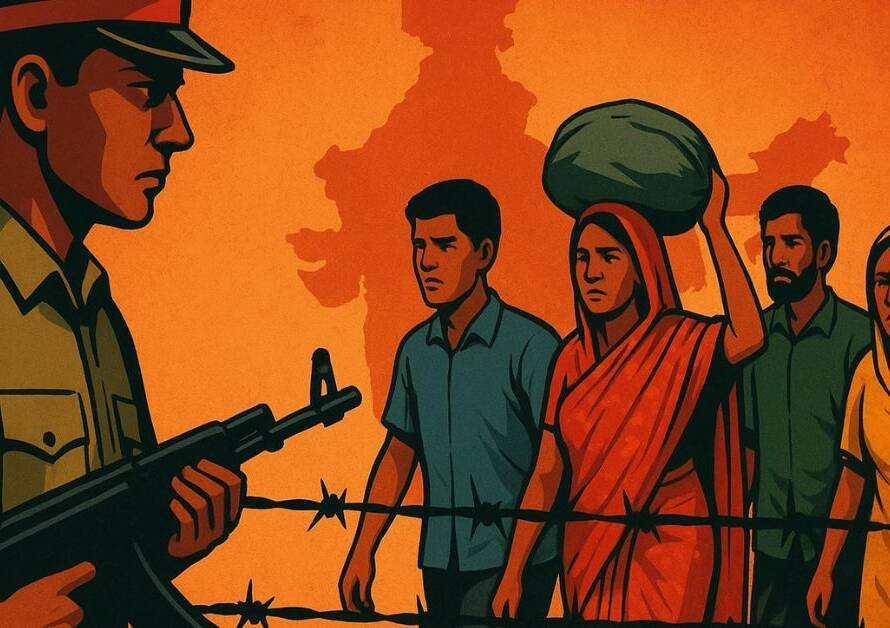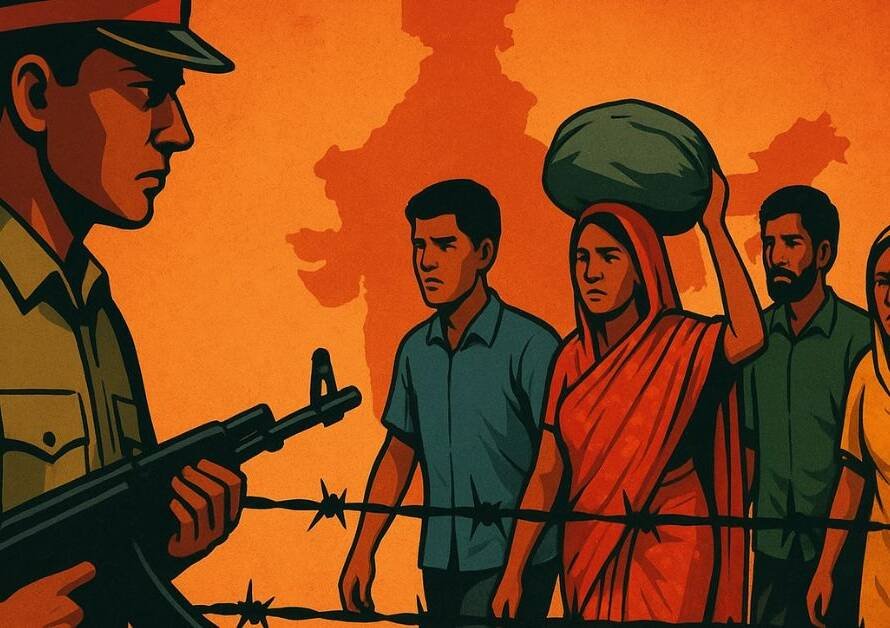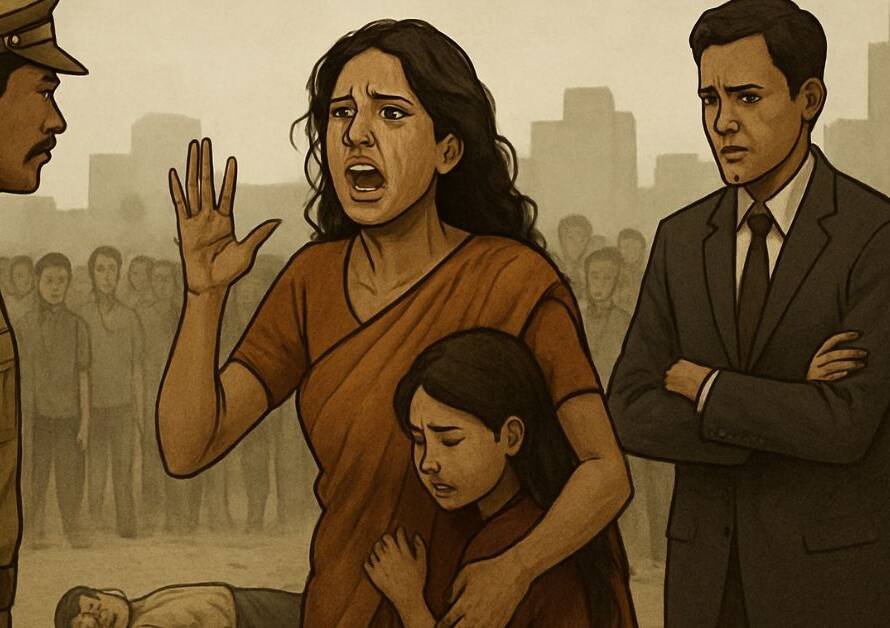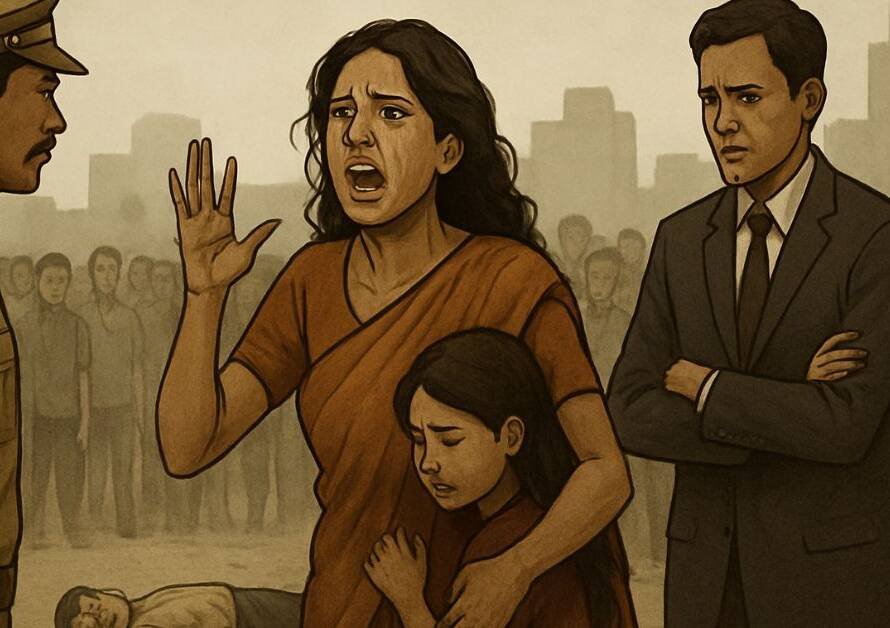Since India gained independence in 1947, the pacification of Muslims has remained a highly debated and evolving issue, with various political parties employing different strategies to engage with the Muslim minority. The approach of some opposition parties, particularly the Congress Party, toward the Muslim community has often been labeled as “appeasement.” This term has been used by critics to describe policies and efforts aimed at securing Muslim votes, often at the expense of long-term communal harmony and national interests.
The Congress Party’s Dream of an Islamic Nation
A controversial claim often made by critics of the Congress Party is that it harbored long-term plans to turn India into an Islamic nation by 2020-2022. One of the major points of contention was the Communal Violence Bill, which the Congress introduced in the Lok Sabha three times between 2011 and 2013. This bill was presented as a means to protect minority communities during communal riots, but its provisions were seen as highly biased against the Hindu majority. Due to strong opposition from the BJP, the bill was never passed. However, had it succeeded, critics argue that it would have pushed Hindus toward subjugation and set the stage for greater minority dominance in India.
Controversial Provisions of the Communal Violence Bill
The Communal Violence Bill had several controversial provisions that drew sharp criticism. Its opponents believed the bill was designed to weaken the Hindu majority and empower minorities, particularly Muslims, by granting them unchecked authority during communal riots. Some of the most criticized aspects of the bill included:
Appointment of Judges Favoring Minorities: The bill proposed that any case involving minorities during communal violence could not be presided over by a Hindu judge. This provision raised concerns about the impartiality of the judiciary and the potential for bias against Hindus.
One-Sided Action Against Hindus: If any complaint was made by a minority individual against a Hindu, the bill allowed the police to arrest the Hindu without any investigation. Additionally, the judge presiding over the case would be from the minority community, raising fears of unfair treatment.
Holding Hindus Responsible for Riots: Regardless of the circumstances, the bill made it likely that Hindus would be held responsible for any damage caused during communal riots. Compensation to minorities for losses would be extracted from Hindus, further fueling resentment.
Discrimination in Renting Property: The bill introduced a clause that would make it illegal for Hindus to refuse renting property to Muslims. If a Muslim individual accused a Hindu of discrimination, the Hindu could face legal action, even if the refusal was based on valid, non-discriminatory reasons.
NOC for Hindu Religious Events: One of the most controversial aspects of the bill was the requirement for Hindus to obtain prior permission from minority communities before conducting their religious events. This provision was seen as an infringement on Hindu religious freedom and autonomy.
These provisions led to the widespread belief that the bill was a conspiracy to undermine Hindu rights, allowing minorities to gain disproportionate power. The BJP’s staunch opposition to the bill played a crucial role in preventing its passage. If it had become law, critics argue, the Congress could have succeeded in its alleged goal of turning India into a de facto Islamic nation by disempowering Hindus.
Pacification of Muslims by Opposition Parties in India Since Independence
The policy of engaging with the Muslim community through appeasement or pacification has not been limited to Congress. Other opposition parties have also adopted various strategies to win over the Muslim vote bank, often at the cost of neglecting broader developmental issues that affect all Indians, regardless of religion.
Post-Independence Era: Congress and Secularism
Following Partition, Muslims in India faced a challenging socio-political climate. The Congress Party, under Jawaharlal Nehru’s leadership, positioned itself as a secular party that sought to reassure Muslims of their safety, rights, and religious freedom. Secularism became the hallmark of Congress’s policy, and it aimed to integrate Muslims into the Indian socio-political fabric. Welfare programs and symbolic gestures, like respecting Muslim personal laws, were aimed at building trust with the community. However, many of these measures were seen as superficial, neglecting the core issues of education, employment, and poverty within the Muslim community.
One of the most striking examples of appeasement came during the Shah Bano Case in 1985. When the Supreme Court granted maintenance to Shah Bano, a Muslim woman, under secular law, conservative Muslim leaders protested, claiming it violated Islamic personal law. The Congress government under Rajiv Gandhi overturned the court’s decision through the Muslim Women (Protection of Rights on Divorce) Act in 1986, which was seen as a blatant act of appeasement to Muslim orthodoxy. This decision highlighted how the Congress Party often prioritized religious sentiments over progressive reforms, especially when it came to Muslim issues.
Identity Politics and the Rise of Regional Parties
From the 1990s onwards, identity-based politics surged in India. The demolition of the Babri Masjid in 1992 polarized the Indian electorate along religious lines. As the BJP gained prominence by championing Hindu nationalist causes, opposition parties, especially in states like Uttar Pradesh and Bihar, increasingly sought to position themselves as protectors of Muslims.
In Uttar Pradesh, the Samajwadi Party (SP), led by Mulayam Singh Yadav, garnered significant Muslim support by positioning itself as a defender of secularism and an opponent of the BJP’s Hindutva agenda. Mulayam was even nicknamed “Maulana Mulayam” by his critics due to his overt alignment with Muslim issues.
In Bihar, Lalu Prasad Yadav’s Rashtriya Janata Dal (RJD) built its electoral strength through the Muslim-Yadav (MY) vote bank. By combining backward castes and Muslim support, Lalu maintained power for many years, though his tenure was often criticized for neglecting economic development and governance in favor of vote-bank politics.
In West Bengal, the Communist Party of India (Marxist) (CPI(M)) maintained power for over three decades by ensuring communal harmony between Hindus and Muslims. However, even the Left Front was accused of failing to address the specific developmental challenges faced by the Muslim community.
The Present: Changing Dynamics
In the 21st century, the BJP’s rise to dominance under Narendra Modi has significantly altered the political dynamics surrounding Muslim appeasement. The BJP has adopted a narrative of “inclusive development” under the slogan “Sabka Saath, Sabka Vikas” (Together with all, development for all), rejecting the appeasement politics of earlier opposition parties. Modi’s government has emphasized policies that seek to integrate all communities into the broader national framework rather than offering special privileges based on religion.
However, the BJP’s policies, such as the Citizenship Amendment Act (CAA) and the National Register of Citizens (NRC), have sparked widespread protests among Muslims and opposition parties. These laws are seen by many as discriminatory against Muslims, yet they represent a clear break from the appeasement politics of the past.
Conclusion
The pacification of Muslims in India, particularly by opposition parties like the Congress, has been a contentious issue since independence. While the Congress initially sought to integrate Muslims through its secular policies, over time, its approach has been criticized for engaging in appeasement rather than genuine development. Other regional parties, like the SP and RJD, have also relied on Muslim support to build their political base, often prioritizing symbolic gestures over addressing systemic issues like education and employment.
The Communal Violence Bill remains a prime example of the dangers of appeasement politics, highlighting how skewed policies could have undermined Hindu rights and further divided the nation. Today, as Indian politics continues to evolve, opposition parties face the challenge of balancing Muslim interests without alienating the majority population or indulging in vote-bank politics that could harm national unity.
As India moves forward, a more inclusive and development-oriented approach, rather than one based on religious appeasement, is essential to ensure long-term peace and progress.
Here are some relevant case studies and examples related to the concept of Muslim appeasement, opposition politics, and policies that have shaped India’s political landscape:
- Shah Bano Case (1985):
Context: Shah Bano, a 62-year-old Muslim woman, filed a petition seeking maintenance from her husband after he divorced her using the Islamic practice of Triple Talaq.
Supreme Court Ruling: The Supreme Court of India ruled in favor of Shah Bano, granting her maintenance under Section 125 of the Criminal Procedure Code (CrPC). This section allowed all Indian women, irrespective of religion, to claim maintenance if their husbands did not support them.
Congress Government’s Response: Under pressure from conservative Muslim groups, the Congress government led by Rajiv Gandhi overturned the Supreme Court’s ruling by passing the Muslim Women (Protection of Rights on Divorce) Act, 1986. This law effectively denied Muslim women the right to maintenance under CrPC, confining them to Islamic law.
Analysis: This case is seen as a prime example of appeasement politics, where the government, to retain Muslim votes, took a decision that was widely criticized as regressive and discriminatory against Muslim women. - The Babri Masjid Demolition and the Role of Secular Parties (1992):
Context: The Babri Masjid, a mosque in Ayodhya, was demolished by Hindu activists on December 6, 1992, leading to widespread communal riots across India.
Political Impact: Several political parties, including the Congress and regional parties, presented themselves as defenders of secularism and minority rights, condemning the demolition and promising protection for Muslims.
Regional Parties’ Response: In states like Uttar Pradesh, Samajwadi Party (SP) leader Mulayam Singh Yadav positioned himself as the protector of Muslims, earning the title “Mullah Mulayam.” His decision to order the police to open fire on kar sevaks (Hindu activists) in Ayodhya in 1990 to protect the mosque further strengthened his image among the Muslim community.
Analysis: While these actions helped certain parties gain Muslim support, they also deepened communal divisions. The Babri Masjid incident became a key issue around which parties rallied for Muslim votes while polarizing Hindu sentiments. - The Sachar Committee Report (2006):
Context: The Sachar Committee, appointed by the Congress-led UPA government in 2005, was tasked with examining the socio-economic conditions of Muslims in India. The committee’s findings, released in 2006, revealed significant disparities in education, employment, and living standards between Muslims and other communities.
Recommendations: The report recommended affirmative action for Muslims, including setting up more schools in Muslim-majority areas, giving them better access to credit, and improving their representation in government jobs.
Criticism: Opponents criticized the Congress government, accusing it of using the report to further its appeasement policy. They argued that the emphasis on Muslim-specific welfare measures was another form of vote-bank politics that did not address the broader issues of development and equality.
Analysis: While the Sachar Committee Report highlighted real issues faced by the Muslim community, the way it was politically leveraged fed into the narrative of “appeasement” and polarized electoral dynamics. - Samajwadi Party and the Azamgarh Issue (2012):
Context: In 2012, during the Uttar Pradesh assembly elections, the Samajwadi Party (SP), led by Akhilesh Yadav, heavily courted the Muslim vote by focusing on the grievances of Muslims in districts like Azamgarh, where many youths were arrested on terror charges.
Actions Taken: After coming to power, the SP government set up committees to review cases of Muslims who were arrested under suspicion of terrorism. This move was seen as a direct response to Muslim demands for justice.
Criticism: The BJP and other right-wing groups accused SP of prioritizing Muslim votes over national security, asserting that the review of terror cases was appeasement politics at the cost of law and order.
Analysis: The SP’s approach helped solidify Muslim support but further polarized communities, as Hindus felt that security was being compromised to win over a specific vote bank. - Triple Talaq Bill (2017-2019):
Context: After years of debate on Triple Talaq, the Narendra Modi-led BJP government introduced and passed the Muslim Women (Protection of Rights on Marriage) Act, 2019, which criminalized the practice of instant Triple Talaq, providing justice to Muslim women.
Opposition’s Reaction: Several opposition parties, including the Congress, Trinamool Congress, and Samajwadi Party, opposed the bill, claiming it was an attack on Muslim personal law and could lead to further victimization of Muslim men.
Analysis: The Triple Talaq Bill was a significant step toward gender justice, but its opposition raised questions about the priorities of certain political parties. Critics argued that these parties were resisting reforms out of a fear of alienating their Muslim voter base, thereby engaging in a form of appeasement. - West Bengal’s TMC and Muslim Appeasement:
Context: Under Mamata Banerjee’s leadership, Trinamool Congress (TMC) has often been accused of appeasing Muslims in West Bengal. For instance, Mamata has made public appearances in hijab, attended Iftar parties, and supported various welfare schemes targeted at the Muslim community.
Specific Example: In 2012, her government announced a monthly stipend for imams and muezzins in the state, a move that was widely seen as appeasement. This decision was criticized by the opposition and Hindu groups, claiming it was unfair favoritism toward one community.
Analysis: While these actions helped Mamata consolidate Muslim support, they also led to resentment among Hindus and accusations of neglecting their issues. The BJP used these instances to make significant electoral gains in Bengal by accusing TMC of indulging in minority appeasement at the cost of the majority community. - CAA and NRC Protests (2019-2020):
Context: The Citizenship Amendment Act (CAA) and the proposal for a nationwide National Register of Citizens (NRC) sparked widespread protests, particularly from Muslim communities, who feared they would be marginalized or even rendered stateless.
Political Mobilization: Several opposition parties, including Congress, Aam Aadmi Party (AAP), and Trinamool Congress (TMC), rallied against CAA-NRC, portraying it as an anti-Muslim policy. They organized protests and supported groups like Shaheen Bagh in Delhi, where Muslim women protested for months.
Analysis: While opposition parties framed their stance as protecting constitutional values and secularism, the BJP and its supporters accused them of resorting to Muslim appeasement for electoral gain. The long-term impact of these protests has been a deepening of communal polarization.
Conclusion:
These case studies show how different political parties in India have navigated the complex terrain of Muslim appeasement. While some actions were rooted in genuine concerns for minority welfare, others were perceived as tactical moves to secure votes. The challenge remains in addressing real socio-economic issues faced by Muslims without alienating other communities or encouraging communal divisions.
To address the challenges of perceived Muslim appeasement, political opportunism, and communal polarization in India, here are some steps you could consider: - Promote Inclusive Nationalism
Unity over Divisiveness: Focus on the idea of an inclusive nationalism that transcends religious and regional identities. Acknowledge the diversity within India and work toward building a sense of belonging among all communities.
Engage in dialogue with moderate voices from both Hindu and Muslim communities to bridge divides and counter extreme rhetoric.
Encourage patriotism through programs that celebrate India’s cultural diversity, historical achievements, and shared values across religious and ethnic lines. - Strengthen Civic and Constitutional Values
Awareness Campaigns: Run campaigns to promote constitutional values like secularism, equality, and justice for all citizens. Educate people about their rights and duties, emphasizing how these protect the interests of every individual, regardless of religion.
Youth Involvement: Engage youth in discussions and programs focused on the Indian Constitution, human rights, and their role in upholding democratic principles. - Address Genuine Issues Faced by Minority Communities
Focus on socio-economic upliftment: Instead of focusing on religious identity politics, address issues like education, healthcare, and employment for marginalized sections of society, including Muslims.
Skill Development Programs: Launch targeted skill development programs in minority-dominated areas to improve employment opportunities and reduce economic disparities.
Encourage political participation: Empower minority communities by encouraging their participation in mainstream politics without focusing solely on religious agendas. - Strengthen National Security and Law Enforcement
Balance between national security and justice: Ensure that national security measures, like anti-terrorism efforts, are transparent and do not disproportionately target specific communities. Build trust by ensuring fairness and objectivity in law enforcement.
Strengthen judicial accountability: Support strong, impartial judicial review of government actions to prevent discrimination against any community while maintaining national security. - Reject Vote-Bank Politics
Campaign for transparent politics: Advocate for political transparency and hold political parties accountable for their actions and promises. Demand clarity on how public resources are being used and whether policies genuinely serve the public good.
Encourage developmental politics: Shift the focus of political discourse from religious appeasement or identity politics to real issues such as infrastructure development, economic growth, and job creation. - Promote Interfaith Dialogue and Mutual Respect
Initiate community dialogues: Promote dialogue between different religious and ethnic groups to foster mutual respect and understanding. Highlight common cultural and historical ties that bind people across religions.
Involve religious leaders: Encourage religious leaders to play a constructive role in promoting peace and harmony, avoiding inflammatory statements or actions. - Support Policy Reforms
Electoral Reforms: Advocate for reforms that diminish the role of identity politics in elections, such as banning political campaigns based solely on religion or caste.
Education Reforms: Introduce curricula in schools and colleges that promote secularism, unity in diversity, and respect for all religious communities.
Uniform Civil Code (UCC): Debate and discuss the feasibility and challenges of implementing a UCC, ensuring that it is done without alienating or discriminating against any community. Focus on achieving equality and justice for all citizens under the law. - Strengthen Internal Unity
Hindu unity and inclusivity: As part of the National Hinduism Board or similar efforts, work toward uniting Hindus across caste, regional, and ideological differences to build a strong, cohesive community.
Foster alliances: Build strategic alliances with other pro-nationalist groups that share your values of protecting the nation and maintaining its cultural heritage. - Counter Disinformation and Polarization
Promote fact-based discussions: Combat misinformation by promoting fact-checking initiatives and encouraging responsible journalism that presents unbiased, factual reporting.
Address online hate speech: Collaborate with platforms to reduce online hate speech and divisive content, ensuring that discussions remain civil and solution-oriented. - Focus on Developmental Agendas
Work for the collective good: Promote developmental policies that are beneficial for all communities. Advocate for policies that improve infrastructure, healthcare, education, and employment opportunities across the board, ensuring no group is left behind.
Inclusive Economic Development: Lobby for inclusive economic policies that aim at poverty reduction and ensure benefits reach marginalized communities, including both Hindus and Muslims.
Conclusion:
The path forward involves moving beyond religious appeasement and polarization toward a governance model based on justice, equality, and inclusive development. Addressing real socio-economic problems, strengthening national unity, and promoting constitutional values will help tackle these challenges in a balanced and fair manner.

